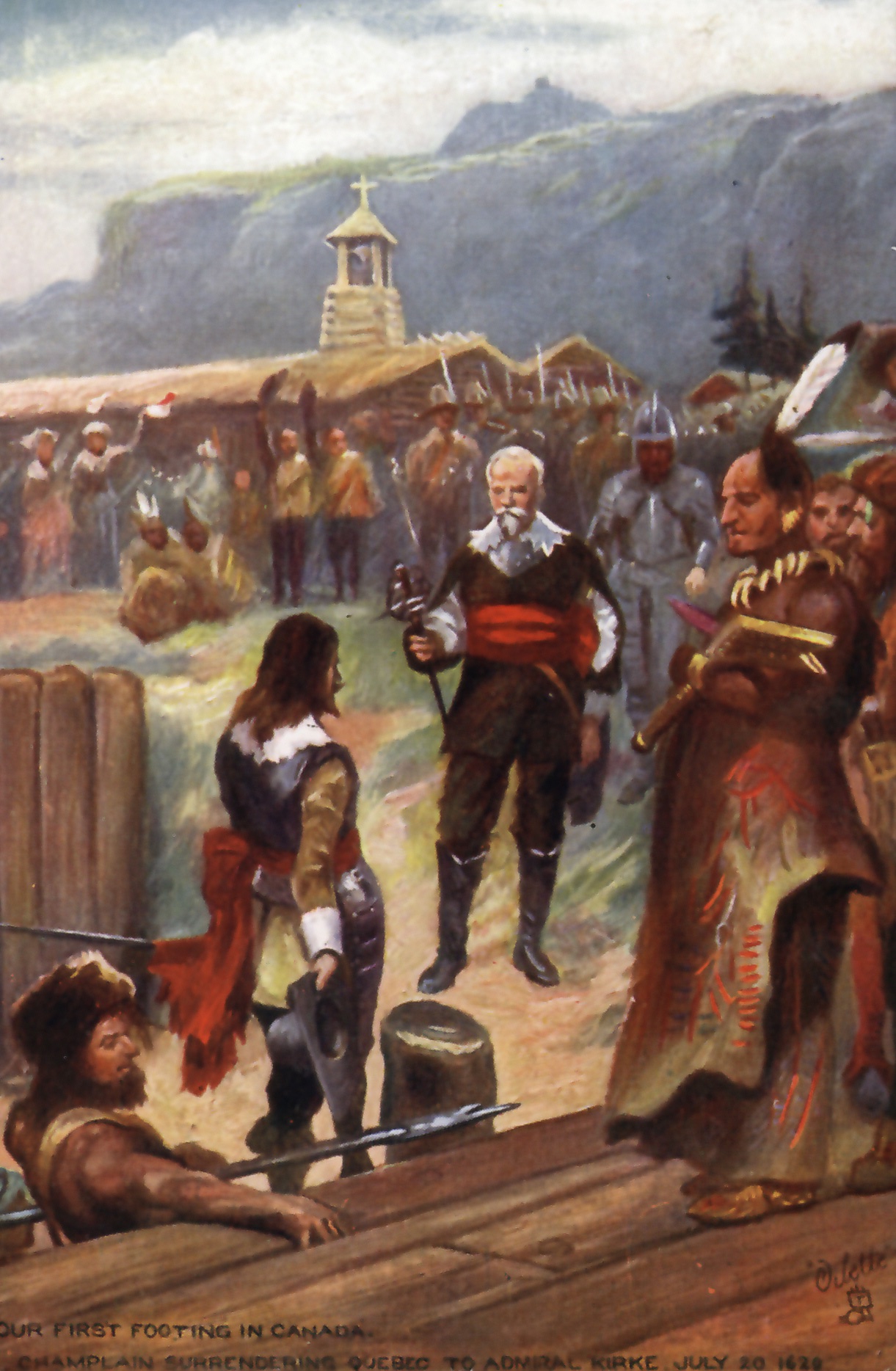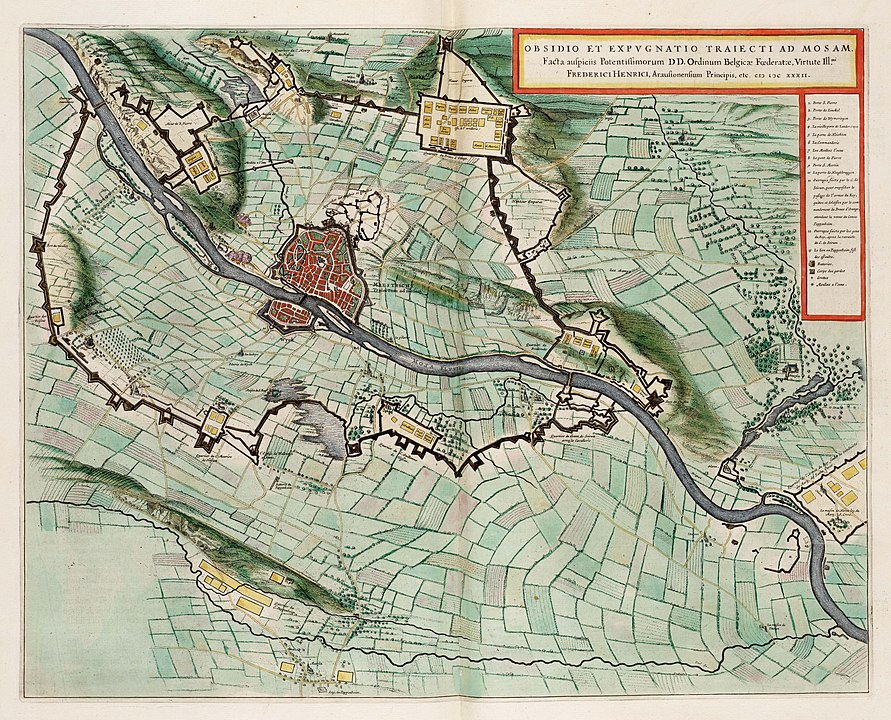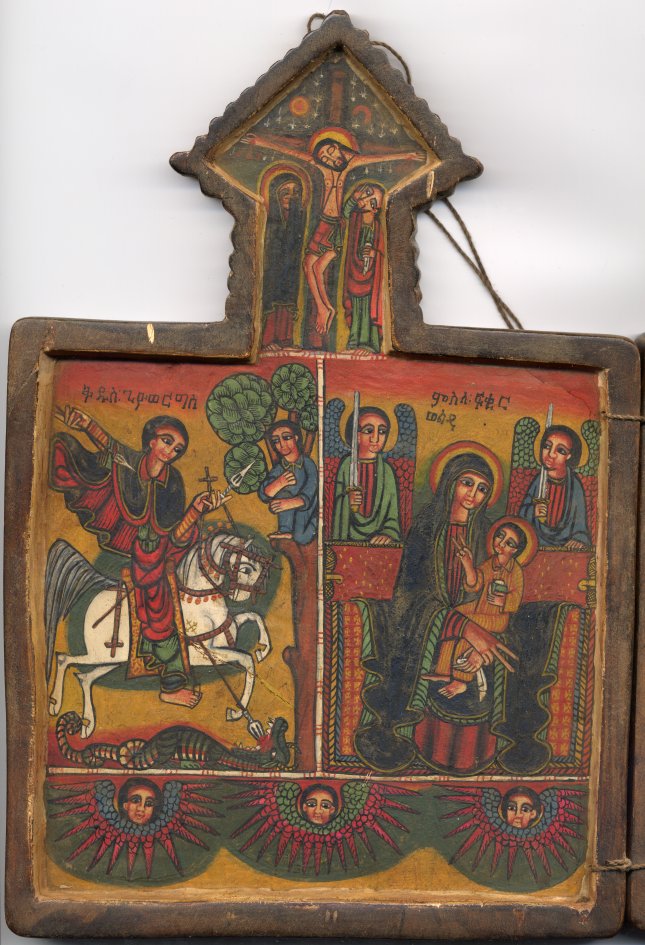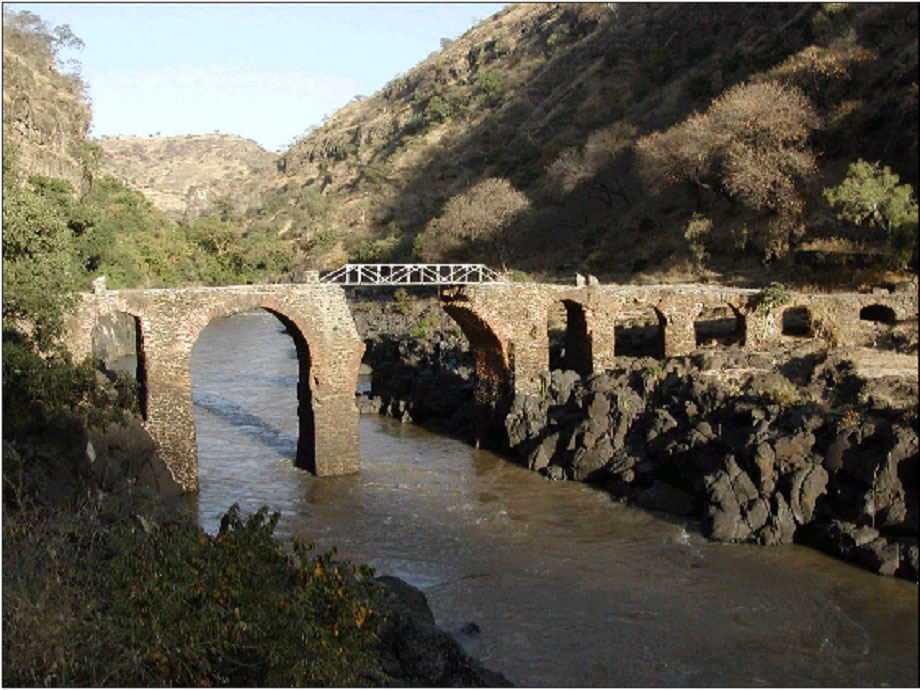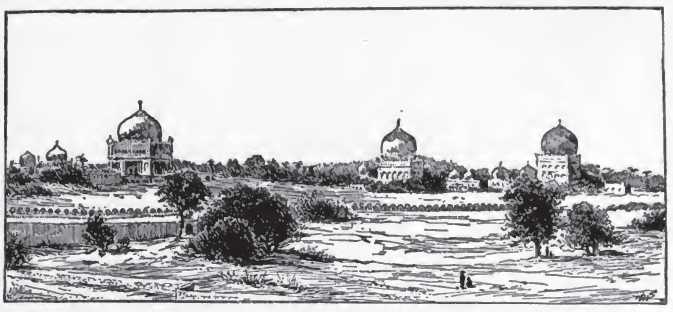In 1632 CE, we see Portugal’s once large and robust-looking empire around the shores of the Indian Ocean continuing to crumble a little, especially with the Mughals’ expulsion of the position they had occupied for many decades in the area of Hooghly-Chinsurah (aka Hugli-Chuchura). They also got largely expelled from Ethiopia. The English were making gains in the south of India; also, settling three additional Caribbean islands, and resolving New World differences with the French. In Europe, the Protestants were advancing against the Catholics, too, as the Dutch took Maastricht from the Habsburgs.
On reflection, I’ll start with the shorter stories. Scroll on down for more details on the imperial rivalries in India and my introduction to a fascinating new source on all things India.
English settle Montserrat, Antigua, Barbuda
In 1632, English colonists established settlements on all three of these islands, which are all near the north-east tip of the Lesser Antilles chain. They had all been visited (or viewed from afar) by Christopher Columbus in 1493. Montserrat is small and mountainous and is dominated by still-dangerous volcanoes in the south. Antigua and Barbuda are larger (totaling 170 square miles!) and generally much flatter and lower– indeed, today badly threatened by rising oceans.
English-WP tells us that Columbus had been told that Montserrat “was unoccupied due to raids by the Caribs.” Also, this:
A number of Irishmen settled in Montserrat in 1632. Most came from nearby Saint Kitts at the instigation of the island’s governor Thomas Warner, with more settlers arriving later from Virginia… A neo-feudal colony developed amongst the so-called “redlegs” [the Irish]. The colonists began to transport Sub-Saharan African slaves for labour, as was common to most Caribbean islands.
The French made brief attacks against Montserrat in the late 1660s and again in 1712, but each time the English/Irish planters restored their position there.
English-WP gives more details about Antigua and Barbuda. It says that before 1492 they were peopled by,
ceramic age pre-Columbian Arawak-speaking Saladoid people who… introduced agriculture, raising, among other crops, the famous Antigua black pineapple (Ananas comosus), corn, sweet potatoes, chiles, guava, tobacco, and cotton. Later on the more bellicose Caribs also settled the island, possibly by force.
Christopher Columbus was the first European to sight the islands in 1493. The Spanish did not colonise Antigua until after a combination of European and African diseases, malnutrition, and slavery eventually extirpated most of the native population; smallpox was probably the greatest killer.
The English settled on Antigua in 1632; Christopher Codrington settled on Barbuda in 1685. Tobacco and then sugar was grown, worked by a large population of slaves from West Africa who soon came to vastly outnumber the European settlers.
The English maintained control of the islands, repulsing an attempted French attack in 1666. The brutal conditions endured by the slaves led to revolts in 1701 and 1729 and a planned revolt in 1736…
My take is that by 1632 slavery-based plantation growing was already proving so profitable on Barbados that English planters and investors were eager to expand the practice as speedily as possible.
The banner image above is a recent view of the English Harbor at Antigua. Credit Mathieu Nivelles.
English return Quebec and rest of “New France” to old France
In 1629, a gang of English privateers had forced the surrender of the small French colony in Quebec by intercepting their supplies; and since England and France were at war King Charles regularized English control of the Quebec settlement. The war in Europe had been, I think, an attempt to provide support to the French Huguenots (Protestants) against the Catholic French monarch, Louis XIII. But Charles was not very committed to it and settled with the French later in 1629. In March 1632 the English and French signed the Treaty of St.-Germain-en-Laye, which returned New France (Quebec, Acadia and Cape Breton Island) to French control.
If Charles was not very committed to the war against France, so at this time, France itself was still not very committed to the process of colonial expansion. French colonizing efforts in North America and elsewhere continued to be spotty, much slower than England’s, and (from a colonial point of view) under-resourced for several decades to come.
In the late summer of 1632, Louis had other things on his mind, too. His brother the Duke of Orleans had given support to a rebellion against Louis and his chief minister, Cardinal Richelieu. The rebellion came to a head September 1 in a battle in Castelnaudary in the Languedoc-Roussillon region of France. The Duke of Orleans did not himself take part. But the other duke who had led it was captured and executed by the king and the rebellious brother dropped his objections to Richelieu.
Dutch take Maastricht
Ever since 1581, when the seven Protestant “United Provinces” of the Netherlands had declared their independence from the Habsburg Empire, the Habsburgs had tried– except during the 12-year truce of 1609-21– to regain those provinces. In 1625, Frederick-Henry, of Orange, became the most powerful leader in the UP’s. He was a capable military leader and slowly started capturing some of the Netherlands territories and cities that the Habsburgs still held onto. In the summer of 1632, he managed, with the help of French and English auxiliaries to take the big Habsburg position at Maastricht. The Habsburgs were also fighting in the Thirty Years’ War in (mainly) today’s Germany at the time, but pulled 18,000 infantry and 6,000 cavalry troops from there to help defend Maastricht.
It was all for naught. After ten weeks to grueling siege and fighting, the Habsburg force in the city surrendered. WP tells us, “the capture of Maastricht was an important victory for the Dutch Republic.”
Ethiopian Emperor abdicates; his successor expels the Portuguese
Susenyos I had ruled the ancient Christian kingdom of Ethiopia since 1606. His page on WP reminds us that:
Susenyos’ reign is perhaps best known as the brief period in Ethiopian history when Catholic Christianity became the official religion. The Emperor became interested in Catholicism, in part due to Pedro Páez’s persuasion, but also hoping for military help from Portugal and Spain (in union at the time of Susenyos’ reign)… Susenyos hoped to receive a new contingent of well-armed European soldiers, this time against the Oromo, who were ravaging his kingdom, and to help with the constant rebellions. Two letters of this diplomatic effort survive, which he entrusted to Páez to send to Europe: the one to the King of Portugal is dated 10 December 1607, while the other is to the Pope and dated 14 October of the same year; neither mention his conversion, but both ask for soldiers. He showed the Jesuit missionaries his favor by a number of land grants, most importantly those at Gorgora, located on a peninsula on the northern shore of Lake Tana.
However, Orthodox Christianity had deep roots in Ethiopia– perhaps dating back to the original Pentecost; and the numerous parts of the Orthodox church’s big infrastructure did not like the advent of the Catholics. They were among the many segments of Ethiopian society that started to rise up against Susenyos.
This WP page on Susenyos’s son Fasilides takes up the story:
Fasilides was proclaimed emperor in 1630 during a revolt led by Sarsa Krestos, but did not reach the throne until his father abdicated in 1632. Once he became emperor, Fasilides immediately restored the official status of the traditional Ethiopian Orthodox Church. He sent for a new abuna from the patriarch of Alexandria, restoring the ancient relationship that had been allowed to lapse. He confiscated the lands of the Jesuits at Dankaz and elsewhere in the empire, relegating them to Fremona. When he heard that the Portuguese bombarded Mombasa, Fasilides assumed that Afonso Mendes, the Roman Catholic prelate, was behind the act, and banished the remaining Jesuits from his lands. Mendes and most of his followers made their way back to Goa [India], being robbed or imprisoned several times on the way. In 1665, he ordered the “Books of the Franks”—the remaining religious writings of the Catholics—burnt.
He would remain on the throne for 35 years.
In India, English get a land grant. Portugal, an expulsion.
Part 1, the English East India Company at Masulipatam
In William Wilson Hunter’s 1907 account of the inter-imperial rivalries that the EIC got involved in India and the east Indies in the 17th century, he writes this about what happened at “Masulipatam”, actually Machilipatnam, which is located roughly halfway down the eastern coast of India, (pp.226- 7):
As the final annexation of Gujarat to the Moghul Empire had put an end to anarchy on the north-western coast of India and enabled the English to settle securely at Surat, so the gradual establishment of the Golkonda Mussulman dynasty on the east coast gave us [i.e., the EIC] an assured position at Masulipatam. In both cases we commenced with permits from subordinate coast authorities, and were eventually forced to seek a guarantee from the inland sovereign power.
What the prince imperial’s grant to Sir Thomas Roe had been to our Surat factory, the “Golden Phirmaund” of the King of Golkonda in 1632 proved to the English settlement at Masulipatam. “Under the shadow of Me, the King, they shall sit down at rest and in safety.” In return, our factors engaged to import Persian horses for his Majesty of Golkonda. Next year they were strong enough to send out a trading party northwards to attempt a settlement in Bengal. The importance of the Masulipatam factory declined on the growth of the more southern settlement which it founded at Madras in 1639. But in spite of the confusions arising from the struggle of the coast rajas with the inland kingdom of Golkonda, and of the subsequent collapse of Golkonda itself beneath the advancing power of the Moghul Empire, Masulipatam remained, and still remains, an important seat of Indo-European trade.
Part 2: Portugal at Hooghly
The Portuguese had been at the city of Chittagong, located on the coast of the state of West Bengal in today’s India, since 1512, and in the area of Hooghly-Chinsurah (aka Hugli-Chuchura), a port located upriver from Chittagong along the Hooghly River, since the mid-16th century.
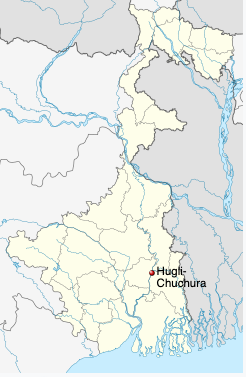
Those last two links are from English-Wikipedia, but today I discovered a great new source on the Portuguese in Bengal, which is on a multilingual web platform based in India called the Sahapedia. It is this article, “The Lusitanians of Bengal: Memories and Legends”, by historian Deepashree Dutta.
Her whole article is really interesting, and very well documented. Here below is what she writes about the Portuguese presence in Hooghly and what happened in 1632. (I took out her footnotes, but you can see them at the original.)
About Mughal Emperor Akbar’s earlier grant of land and rights to the Portuguese:
The third probable reason for the rise of Hooghly was Akbar’s farman to the Portuguese, which officially allowed them to build a city there. Sebastian Manrique, Portuguese traveller and missionary, notes in his account that Emperor Akbar, on becoming aware of the vast scale of trade conducted by the Portuguese from Bengal, summoned the Portuguese merchants from Hooghly to his court. Hence, a deputation led by the merchant Pedro Tavares, along with two Jesuit priests, went to Fatehpur Sikri. A direct aftermath of this meeting was the farman of 1578–80, which allowed the Portuguese to choose the site of construction of their proposed settlement in Hooghly and also granted them some adjoining lands to support their establishment. The emperor’s order further granted full religious liberty to the Portuguese, with freedom to preach Christianity, build churches and even baptise gentiles with their consent. It gave significant legitimacy to the Portuguese settlement in Hooghly, since, initially, the port was established by private traders, adventurers and smugglers.
By the end of the 16th century, Hooghly was a flourishing bandar [port city] with the lion’s share of its trade in the hands of the Portuguese. Their merchants had extensive trading relations with the Malabar Coast, Southeast Asia and China. From China, among other goods, they imported a large amount of textile and ‘worked silk’, including brocades, velvets, and taffetas. Another very lucrative part of their trade was in commodities forbidden by the Portuguese Crown—cloves, nutmeg and mace from the Molucca Islands and Banda, camphor from Borneo, cinnamon from Ceylon and pepper from Malabar. The Portuguese from Hooghly also exported a large number of commodities, of which rice was the most important. The vast scale of the Portuguese trade from Hooghly can be gauged from the fact that they annually paid 10,000 tankas to the Mughal government. Notably, they also engaged in the notorious but highly profitable slave trade with their counterparts in the eastern delta as well as the Moghs (Arakanese).
Then, 1632:
The watershed in the history of Portuguese Hooghly is the sacking of the port by Shah Jahan’s forces in 1632. This incident had caught significant attention during the time, and there are multiple accounts of the incident both in Persian and Portuguese sources. Mughal chronicles, Lahori’s Padshahnama, and Inayat Khan’s Shahjahanama provide us accounts of this event. In fact, the siege was illustrated by the imperial artists in the manuscript of Padshahnama, now at the Royal Library, Windsor Castle. As far as the Portuguese are concerned, their official chronicles give scant attention to the event. In contrast, the missionaries working in Bengal provide us detailed descriptions of the event.
All the sources enumerate several reasons that made Shah Jahan call for the siege. Briefly they are: a Portuguese individual Manoel Tavares’s betrayal of Shah Jahan at the time of his revolt against his father, the failure of the Bandel of Hooghly to send an embassy to the court at the ascension of Shah Jahan, the news that the Portuguese in Hooghly were supplying men and ammunitions to the Mogo king (the king of Arakan), and the increasing prosperity of Bandel [the Portuguese enclave in Hooghly.]
However, Manrique, in his account mentions the burgeoning slave trade of the region that led to the capture of some Mughal ladies by the Portuguese slave ships (gelias) near Dhaka as one of the immediate cause for the siege. The Persian chronicles, similarly, ascribe much of the blame not only to the Portuguese slave traders but also the Christian missionaries of the region.
Jesuit priest Cabral provides us a detailed and graphic eyewitness account of the siege and combats. There were also several attempts at negotiations in the course of the siege. When the third such attempt failed, the Portuguese decided to flee by sea on September 24, 1632. On realising this, the nawab’s troop launched a full-fledged attack. They occupied Bandel and set it on fire. In the course of the struggle, many were killed on both sides and some were taken captive.
In the immediate aftermath of the siege, some, including Cabral, were able to flee and take refuge in a nearby island, but, Friar Manrique’s account informs us that 400 people were taken captive to the Mughal court at Agra. The captured included the Augustinian priests Father Prior Fray Antonio de Christo and Francisco de la Encarncion…
Interestingly, hardly a year after the siege, the Portuguese came back and reestablished themselves in Hooghly. This was made possible by a farman granted by Shah Jahan himself. The order stated that the Mughal emperor had granted 777 bighas of rent-free land to the Augustinian fathers and Christians of the Bandel church of Hooghly in the year 1633, with 17 accompanying religious and commercial privileges.
Many scholars have wondered why Shah Jahan, after so much of animosity, made the grant. The Portuguese community in Hooghly quickly resettled itself… In fact, the period between the late seventeenth and early eighteenth centuries has even more evidence of Portuguese presence in the port town, with, especially, the Augustinian Church exerting significant power.

